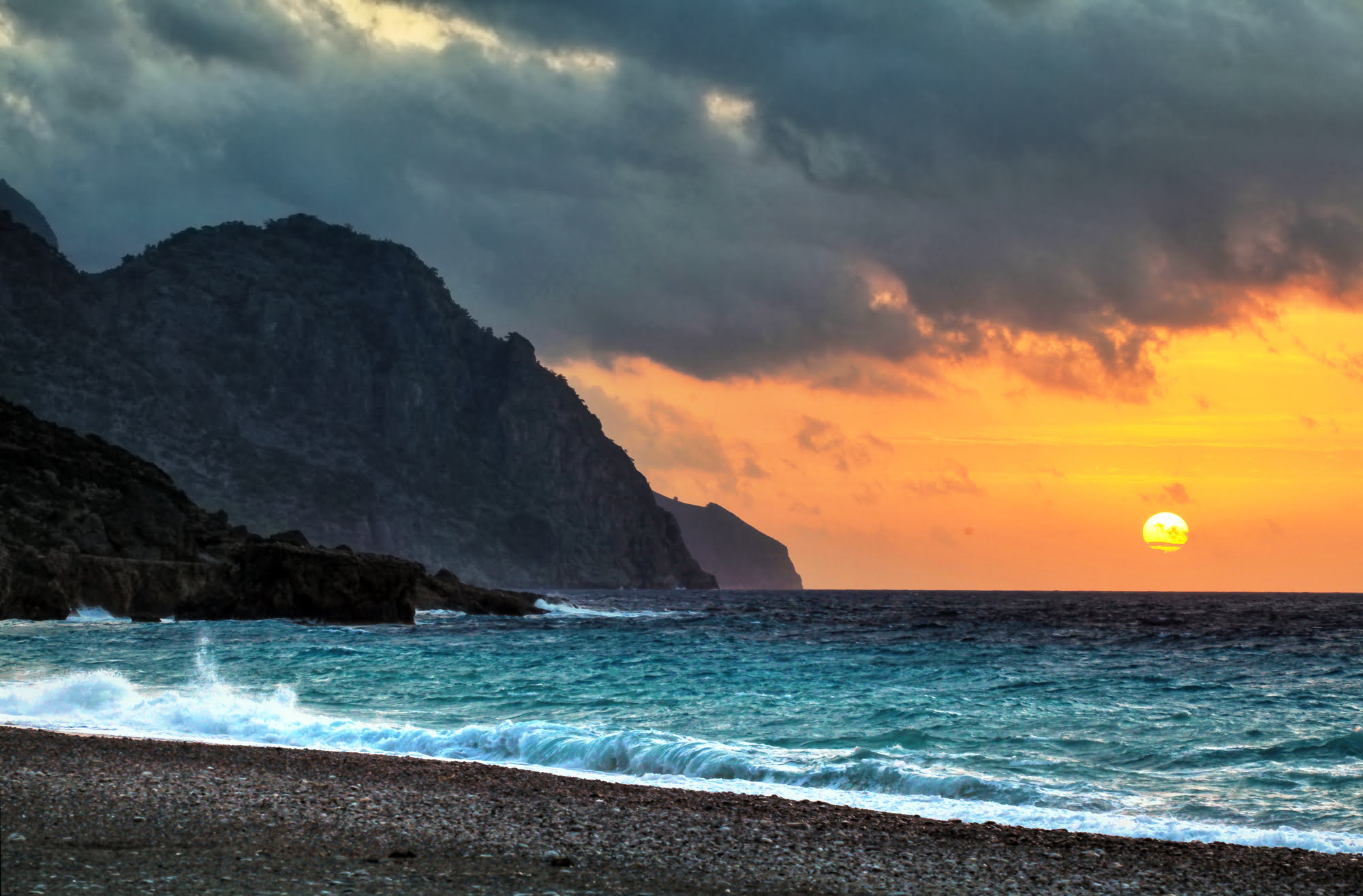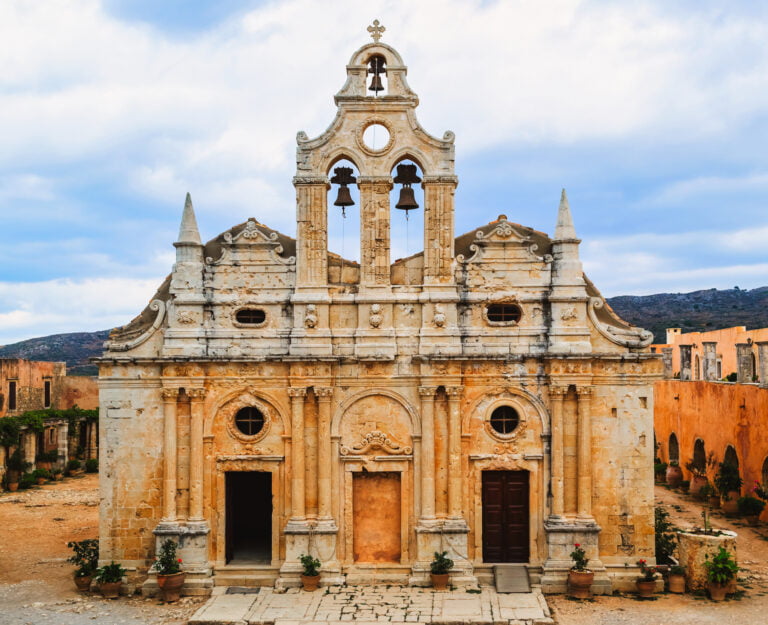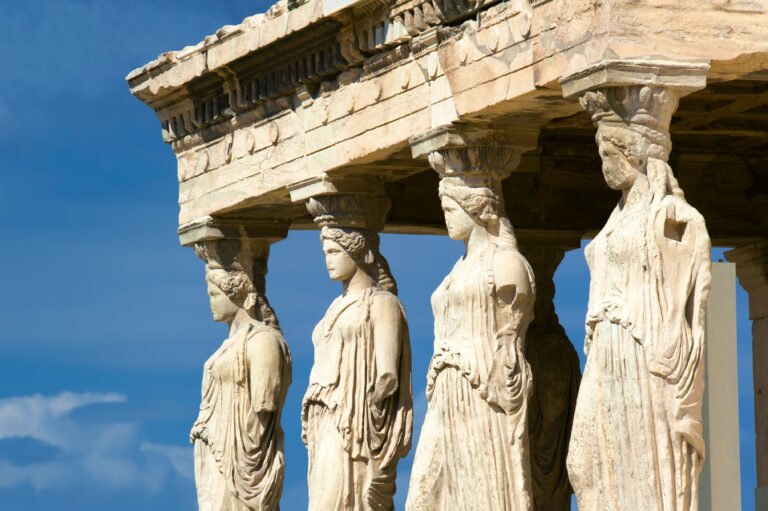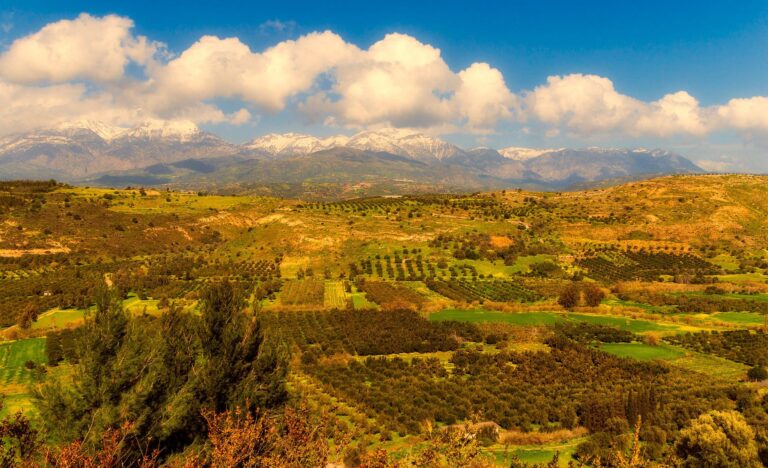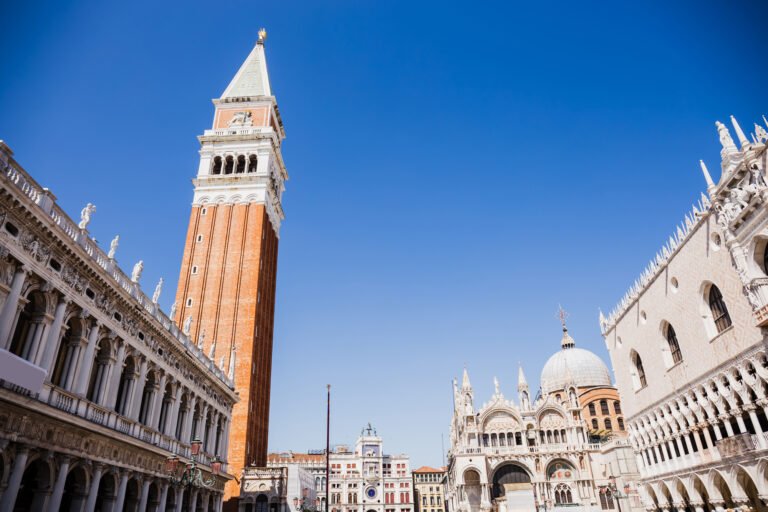Sougia: The Hardly Known Village Plus Ancient Lissos
Nestled on the southern coast of Crete lies the charming village of Sougia. My first encounter with this hidden gem was about thirty years ago, and the memories of that visit are still vivid. Back then, Sougia was a quaint village, untouched by the hustle and bustle of modern tourism. Its simplicity and authenticity were its most endearing qualities.

Sougia: A Glimpse into the Past
Three decades ago, Sougia was a modest settlement with just a handful of rooms available for visitors. There were a couple of traditional Kafeneons, where locals would gather to sip coffee and exchange stories, and a few tavernas lined the front, offering delicious Cretan cuisine. The village was not known for its bustling activities or attractions. Instead, it had a serene port, remnants of a wartime anti-aircraft gun, and an expansive, pristine beach on its eastern side. The beach was a sight to behold. Stretching out for a couple of kilometres, its golden sands were mainly empty, save for a few tents pitched by Greek holidaymakers.
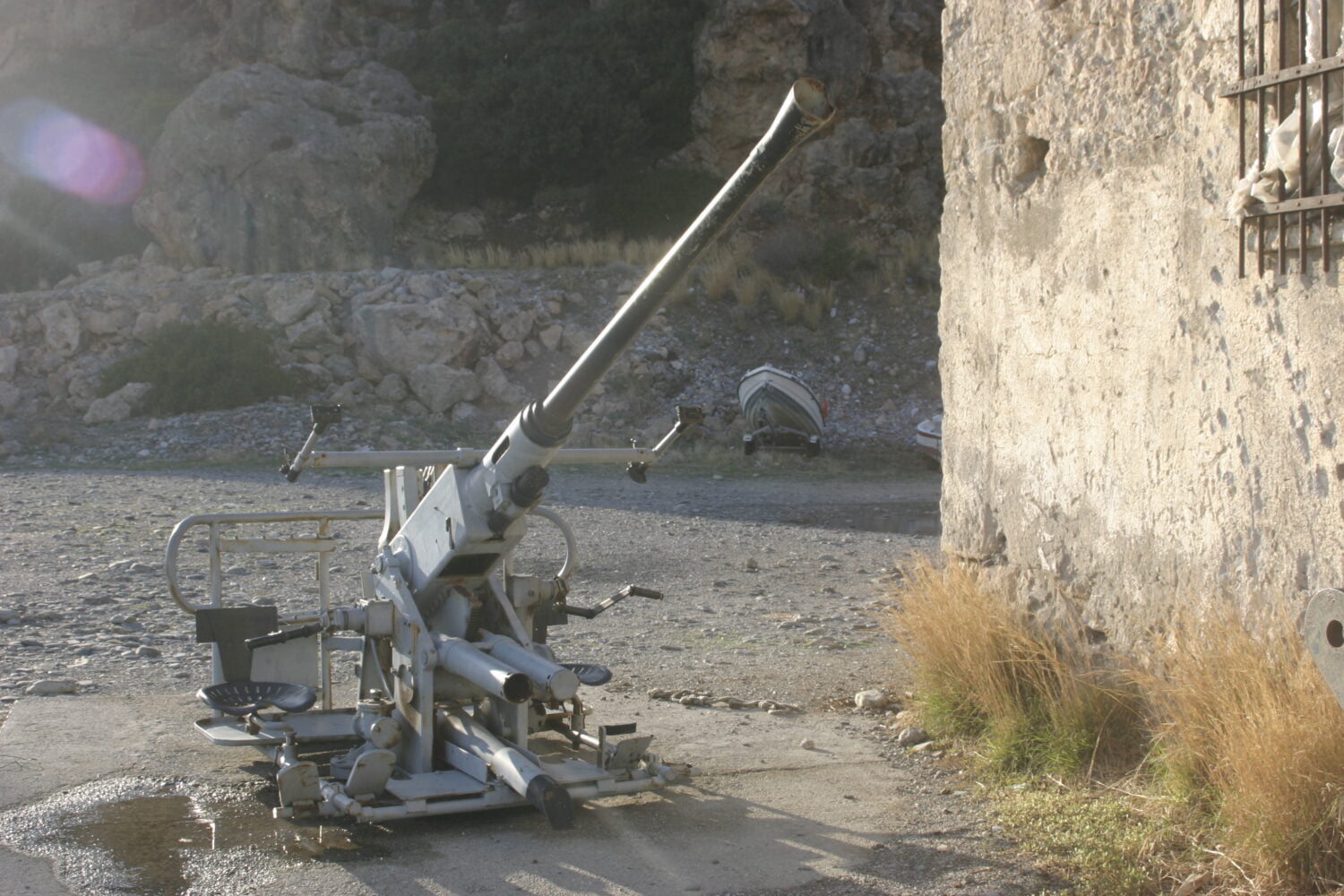
The gentle lapping of the waves and the distant chirping of birds complemented the tranquillity of the beach. Behind this serene beachfront, the valley led to the historical village of Koustougerako. This village was not just known for its picturesque landscapes but also for its rich history. During World War II, Koustougeriko became a hub of resistance, with tales of bravery and resilience echoing through its narrow streets.
Sougia’s Historical Significance
Before constructing the road connecting Sougia to northern Crete, the village played a pivotal role in the island’s supply chain. The port of Sougia was a lifeline for many inland villages. Boats laden with essential supplies would dock here, and the hardworking villagers of Sougia would ensure their timely delivery to various destinations. This made Sougia a village of great significance. However, with the advent of the road, the dynamics changed. The once-bustling port saw fewer boats, and the village, once a hive of activity, slowly drifted into a peaceful slumber.
Sougia Today: A Blend of History and Natural Beauty
Fast forward to today, and Sougia has seen some changes, albeit not drastic. A few more tourists venture into this part of Crete, drawn by its untouched beauty and historical significance. Some come in their rented cars, eager to explore the ancient ruins of the city of Lissos. Others are simply looking for a unique experience on the south coast, away from the crowded tourist spots. Yet, despite the passage of time and the slight increase in visitors, Sougia has retained its charm. It remains a rare delight on the island of Crete – a place where history, nature, and culture converge. The village blends a vast, unspoiled beach and a tranquil atmosphere devoid of tourist crowds.

Ancient City of Lissos
Lissos, often overshadowed by the more renowned archaeological sites in Greece, is a hidden treasure nestled between Sougia and Paleochora on the southern coast of Crete. Its rich history and serene natural setting make it a fascinating destination for those seeking a blend of history, culture, and natural beauty.
Historical Background
Lissos was an important city during the Hellenistic and Roman periods. It was known for its sanctuary dedicated to Asklepios, the god of medicine. Pilgrims from various parts of the region travelled to Lissos, seeking healing and solace. The city’s therapeutic springs, believed to have healing properties, further enhanced its reputation as a healing centre.
Archaeological Discoveries
Excavations in Lissos have unveiled a plethora of artefacts and structures that offer insights into its glorious past. Some of the significant discoveries include:
- The Temple of Asklepios: The remnants of this temple stand as a testament to the city’s religious significance. The temple, with its intricate carvings and designs, showcases the architectural prowess of the ancient Cretans.
- Roman Necropolis: The ancient burial grounds of Lissos provide a glimpse into the burial customs and practices of the time. The ornate tombs, some of which are adorned with inscriptions, shed light on the city’s inhabitants and their lives.
- Therapeutic Springs: Once the centre of attraction for many pilgrims, the springs are still present. Although their healing properties are now the stuff of legends, they remain a serene spot, surrounded by lush greenery and the soothing sounds of nature.
- Mosaics and Inscriptions: Various mosaics and inscriptions have been unearthed, depicting scenes from mythology, daily life, and religious rituals. These artistic pieces offer a colourful glimpse into the city’s cultural heritage.

Natural Beauty and Setting
Lissos is about more than just ancient ruins. The journey to the site is an adventure in itself. The city is nestled in a secluded bay, surrounded by rugged mountains and dense vegetation. The trek to Lissos, whether taken by boat or on foot, offers breathtaking views of the Mediterranean Sea, interspersed with glimpses of local flora and fauna.
The Decline and Rediscovery
The exact reasons for Lissos’ decline remain a mystery. Some theories suggest natural disasters, while others point to pirate invasions. Over time, nature reclaimed the once-thriving city, with its ruins hidden beneath dense vegetation. Only in the 20th century did Lissos garner attention from archaeologists and historians. Since then, systematic excavations have brought to light its rich history and significance.
Conclusion: Lissos – A Journey Back in Time
Lissos offers a unique blend of history and natural beauty. It’s a place where one can tread on ancient pathways, touch the remnants of a bygone era, and feel the whispers of the past. For those seeking a deeper understanding of Crete’s history, away from the crowded tourist spots, Lissos is a must-visit. It’s not just an archaeological site; it’s a journey back in time, waiting to be experienced.
Getting to Ancient Lissos: A Comprehensive Guide
The ancient city of Lissos, its rich history and serene setting, is a must-visit for anyone travelling to Crete. However, reaching its secluded location requires some planning and a sense of adventure. Here’s a step-by-step guide on how to get to Lissos:
Starting Point: Sougia
Sougia, a small village on the southern coast of Crete, is the most common starting point for trips to Lissos. If you’re not already in Sougia, you can reach it by:
- By Car: From Chania, drive south through the mountains, passing through Agia Irini and Rodovani villages. The journey takes about 2 hours.
- By Bus: There are daily buses from Chania to Sougia, especially during the tourist season.
- From Sougia to Lissos
Once in Sougia, you have two primary options to reach Lissos:
- By Boat: This is the easiest and quickest way. During the tourist season, there are daily boat services from Sougia to Lissos. The boat ride offers a unique perspective of the coastline and takes about 20 minutes.
- On Foot: For the more adventurous, a hiking trail leads from Sougia to Lissos. The path is well-marked and offers stunning views of the Mediterranean Sea and the surrounding landscape. The hike is of moderate difficulty and takes about 1.5 to 2 hours one way. Wear comfortable hiking shoes, carry enough water, and start early to avoid the midday sun.
Exploring Lissos
Once you arrive in Lissos, you can explore the ancient ruins at your own pace. There aren’t any facilities in Lissos, so it’s advisable to carry snacks, water, and other essentials. If you plan to stay for a while, consider bringing a hat, sunscreen, and archaeological site map.
- Returning to Sougia
- By Boat: Ensure you know the return timings if you arrive by boat. The boats usually give visitors ample time to explore before returning to Sougia.
- On Foot: If you hiked to Lissos, you must hike back the same way. Ensure you start your return journey well before sunset to avoid navigating the trail in the dark.
Tips for Your Trip:
- Check the Weather: Before setting out, especially hiking, check the weather forecast. The trail can be challenging in rainy or scorching conditions.
- Stay Safe: While Lissos is generally safe, informing someone about your plans is always a good idea, especially hiking alone.
- Respect the Site: Lissos is an archaeological treasure. Please avoid touching or disturbing the ruins; always carry out any litter you bring.
In conclusion, reaching Lissos requires some effort, but the reward – a blend of history, culture, and natural beauty – is well worth it. Whether you sail or hike, the journey to this ancient city promises to be an unforgettable experience.

Sougia – One of Crete’s Best-Kept Secrets
For those seeking an authentic Cretan experience away from commercialised resorts and crowded beaches, Sougia is the place to be. It is not a nudist beach. It’s a testament to Crete’s rich history, natural beauty, and the warm hospitality of its people. Whether you’re a history buff, a nature lover, or someone looking for a quiet getaway, Sougia promises an experience like no other. So, the next time you’re in Crete, add this hidden gem to your itinerary and discover the magic of Sougia for yourself.
Table of Contents
Views: 169

